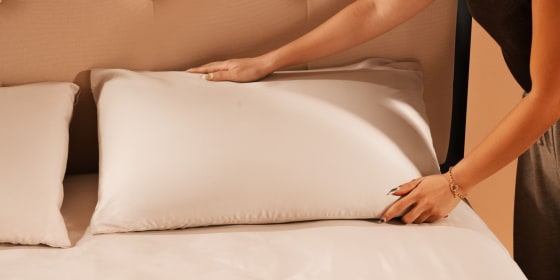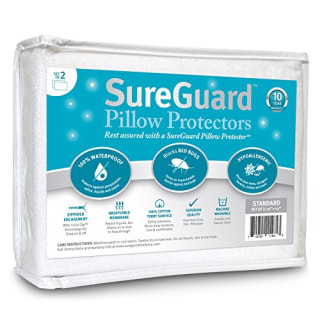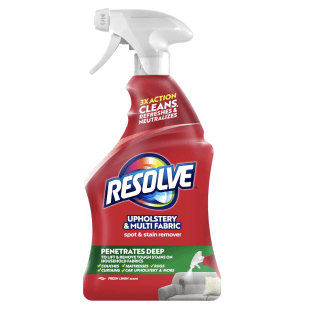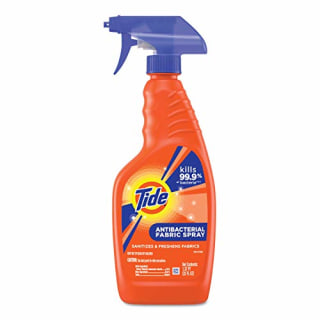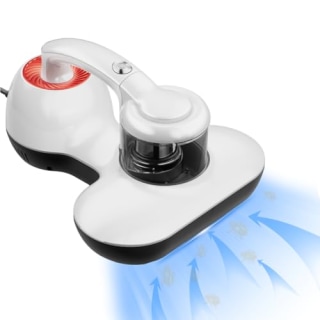We don’t always have the answers, but we have some people on speed dial who do — which is why we present to you our series FYI where we have experts explain if lip balm is actually bad, how often you should wash your hair and more.
Choosing the right pillow to lay your head on can determine the overall quality of sleep you get each night. Equally as important, is making sure your pillows stay in good shape, even after frequent use. This means knowing how to clean your pillows without ruining their shape or fill material, and how often to do it.
To find the best way to clean pillows, I spoke with multiple cleaning experts for their guidance and cleaning product recommendations. Below, I walk through their input and recommended methods for cleaning pillows.
SKIP AHEAD What are the different types of pillows? | How to clean pillows
Want more from NBC Select? Sign up for our newsletter, The Selection, and shop smarter.
The best products for cleaning pillows
The cleaning products below have at least a 4-star average rating from 500 reviews or more on Amazon.
SureGuard Pillow Protector (Set of 2)
Having a pillow protector is the best way to avoid having to deep clean your pillows in the first place. This set of two, which has a 4.6-star average rating from 11,943 reviews on Amazon, is 100% waterproof, hypoallergenic and keeps bed bugs out, according to the brand. It also wicks away moisture and liquids, like sweat or body oils, and they’re machine washable. It also has a soft cotton terry texture and doesn’t make noise when you move around, like with plastic.
Resolve Upholstery & Multifabric Spot and Stain Remover
If you want to spot-treat a stain on your pillow rather than throwing the whole thing in the washing machine, experts recommend using a spray such as this one from Resolve. You spray it directly on the stain, let it sit for five minutes and then use a cloth to dab and remove the stain. With a 4.5-star average rating from 16,866 reviews on Amazon, it’s safe on cotton, polyester and other household fabrics you’d find on upholstered furniture or sofas, in addition to pillows.
OxiClean Odor Blasters Odor and Stain Remover
This powder detergent has a 4.7-star average rating from 37,862 reviews on Amazon and is ideal for getting rid of both stains and odors on pillows that are machine washable. It’s particularly great at removing residue from sweat and body oils, which can lead to musty smelling laundry and pillows. Use one full scoop for every gallon of water and add it to the washer with water before adding your clothes or pillows. For a more thorough clean, the brand recommends soaking for 3 to 6 hours.
Tide Antibacterial Fabric Spray
This fabric spray is effective at getting rid of odors on pillows, but it’s also antibacterial so it sanitizes as well. If your pillows have an unpleasant smell, but you don’t want to throw them in the wash (or they aren’t machine washable), this is a goodxs option for spot-treating odors immediately. You can also use it on clothing and other types of bedding. The spray also has a 4.6-star average rating from 12,153 reviews on Amazon.
Hersven Mattress Vacuum Cleaner
You probably already have an upright vacuum for cleaning your floors, but a mattress vacuum can also be useful for cleaning your pillows. This wired appliance has a 4.4-star average rating from 1,032 reviews on Amazon and has everything you’d find in a regular vacuum, but in a handheld option. It has an UV-C light at the front to help you see particles more closely, a stainless steel filter, a HEPA filter, a dust collecting cup and a handle on the top. You can clean the filters in the sink and use it to get rid of particles on your mattress and sheets.
What are the different types of pillows?
It’s important to know what type of pillows you have before washing them because this will determine the best way to clean them, according to Kadi Dulude, owner of the cleaning company Wizard of Homes. Like mattresses, pillows often come in a few common fill types, which I list below.
- Down: Down refers to down feathers, which come from the soft feathers of geese and ducks, according to Textile Exchange, a non-profit organization that focuses on education of the textile industry. It’s prized for its durability, breathability and softness. Pillows made with down have different types of lofts, which influences their size and thickness, according to the organization.
- Down alternative: As the name implies, down alternative pillows are made of a synthetic material meant to resemble the feel and loft of authentic down pillows. Often made of materials like polyester, down alternative pillows are a good choice for people who use pillows with a non-animal based fill material. Down alternative pillows are also typically less expensive than traditional down, according to the Sleep Foundation.
- Memory foam: Created by a NASA-funded research team, memory foam is an open-cell foam material known for its energy-absorbing properties. While extremely comfortable to sleep on, memory foam can hold onto a lot of moisture, according to cleaning experts I’ve previously spoken with. Many pillows and mattresses are memory foam because of these characteristics.
- Latex: Compared to memory foam, latex foam is bouncier and more elastic giving it a fast response time, according to Sleepopolis, a site that provides information about the sleep industry. Latex pillows have a similar texture to memory foam ones and should be treated similarly. “Down or feather pillows usually do well in a gentle cycle with mild detergent, while memory foam or latex pillows shouldn’t go in the washer; instead, they should be spot-cleaned or vacuumed,” according to Jennifer Rodriguez, chief hygiene officer at ProHousekeepers.
How to clean pillows
How to clean down and down alternative pillows
- To clean down, down alternative or any other material labeled as machine-washable, add them to the washer drum by themselves.
- Select a gentle cycle and use cold water with mild detergent, a scoop of OxiClean White Revive, OxiClean Odor Blasters, Borax or washing soda. If possible, allow the pillow mixture to soak for at least 30 minutes to an hour (this is especially important in my experience) before starting the cycle.
- Immediately transfer the pillows to the dryer and tumble dry on low heat until completely dry before covering with a pillow cover or case.
How to clean memory foam and latex pillows
- To clean memory foam or latex pillows that have to be washed by hand, start by removing the pillowcase and/or the pillow cover.
- Start by using a handheld vacuum or mattress vacuum, like the Hersven Mattress Cleaner Vacuum, to clean up any solid debris on or hidden within the surface of the pillow.
- Use a mild fabric spray, like Resolve Upholstery & Multifabric Spot and Stain Remover or Tide Antibacterial Fabric Spray, to spot-clean stains on and around the pillow and to sanitize it.
- Allow damp pillows to air-dry in a ventilated room. You could also open a few windows to help speed up the process. Don’t allow the pillows to get and stay damp for days, as this could lead to mold and mildew growth.
Meet our experts
At NBC Select, we work with experts who have specialized knowledge and authority based on relevant training and/or experience. We also take steps to ensure all expert advice and recommendations are made independently and without undisclosed financial conflicts of interest.
- Kadi Dulude is the founder of home cleaning services company Wizard of Homes.
- Jennifer Rodriguez is the chief hygiene officer at home cleaning services company ProHouskeepers.
Why trust NBC Select?
I am a commerce editor at NBC Select, where I regularly report on cleaning topics, such as the best way to clean grout, how to get rid of mold and methods for whitening clothes without bleach. I spoke with two cleaning experts for their guidance for this story, and I applied my own expertise to inform the instructions in this story.
Catch up on NBC Select’s in-depth coverage of tech and tools, wellness and more, and follow us on Facebook, Instagram, Twitter and TikTok to stay up to date.
